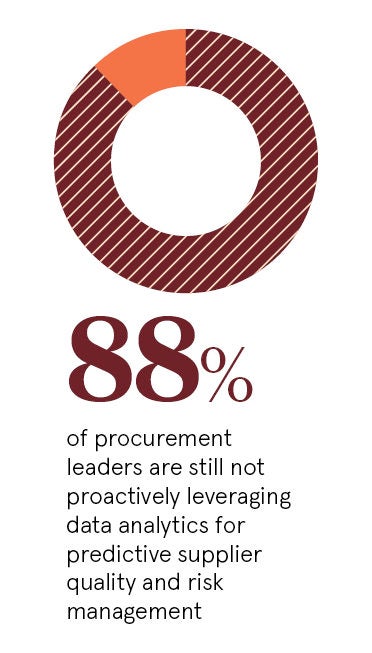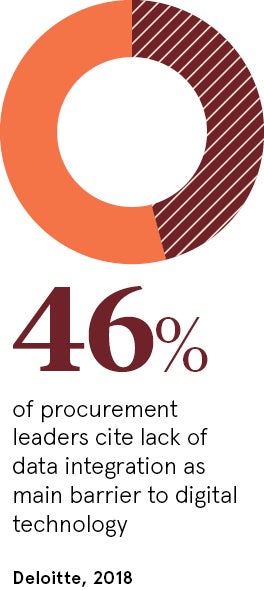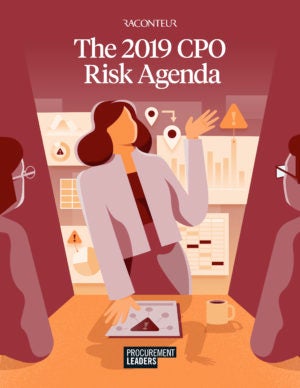Download The 2019 CPO Risk Agenda here and discover how to drive change in your business.
When Hurricane Michael, one of the biggest tropical storms ever to make landfall in the United States, struck in October 2018, IBM knew three days before the devastation started that seven of its sites, 21 datacentres and 58 suppliers were in harm’s way, and started planning for how to keep them safe.
It was able to be this prepared in part because it owns the Weather Channel and was collating all the latest forecasts as they happened, says Lou Ferretti, project executive in the company’s supply chain risk, environmental and compliance programs. But it was also bringing all the company’s artificial intelligence (AI) and cognitive abilities to bear, analysing social media, news reports and other sources to get the fullest possible picture of what was happening on the ground.

Through its cognitive supply chain risk management system, it monitors a range of potential supply chain disruptions, from earthquakes and floods to drought and forest fires, as well as events such as strikes and social unrest. “We monitor every risk event around the world, and we can narrow it down very quickly to what we need to worry about,” he adds.
Technological approaches such as this will be increasingly crucial in future. The amount of data available has exploded in recent years and companies’ ability to analyse it has not kept pace.
“Five years ago, before we had all this cognitive information, we were having to deal with events like the Fukushima nuclear disaster and huge floods in Thailand, and we had people manually doing the assessments,” says Tom Ward, IBM’s AI project leader. “It was too much to keep up with. Now we know with high confidence what is going on around the world and how it affects us.”
The value of having as much information at your fingertips as possible is that it increases the number of options you have to mitigate risks. In that sense, being a procurement manager is like being the captain of a big ship, says Frédéric Stalder, head of performance and process management at chemicals group Clariant. “It’s important to get the information that you need in advance to avoid the hazards.
“We need to monitor new trends, ensure our operations are sustainable, make sure we comply with all the regulations. Yes, we still need to control costs, but more and more we need to develop new strengths to support value drivers in the company,” he says. “Procurement guys in future should not just be focusing on suppliers; they need to understand what’s going on in the market, feedstocks, customer needs, internal operations and the financial situation.”
Procurement is now more about risk management than negotiation – Frédéric Stalder, Head of performance and process management, Clariant
Clariant has 220 internal audits a year, as well as customer and system audits, and the procurement team are involved in all of them. Mr Stalder says: “We can’t work like we did in the past, with Excel spreadsheets. We have to use big data so we can connect all our internal information with external data. We have developed a number of tools to help us.”
The company screens information from a number of sources, cross-checking them to ensure they are not “fake news”, and if the information is deemed important, procurement managers are alerted. Such information can save millions of dollars and prevent significant disruption to supplies and operations. In 2017, a fire at a chemicals facility in Rotterdam halted production and Shell, which ran the facility, declared force majeure, which drove prices up sharply and rapidly.
Clariant was able to secure supplies from an alternative provider before force majeure was declared because a truck driver told the company that he could not pick up his load because of the incident. “We took the decision to source from a different supplier and saved a lot of money,” Mr Stalder says.
“Procurement is now more about risk management than negotiation. It’s not a supply chain any more, it’s a supply network and we need full transparency. Clariant has about 40,000 suppliers and, while the normal focus is on the biggest suppliers, the risks mostly reside in lower tiers, so we decided to expand our focus on them. For that you need a profound monitoring system. There has been a big increase in interest in big data.”

The group is also embracing AI. He says: “It’s important for forecasting where future risks will come from. We have a lot of retrospective data, but we want to move to a more forward-looking system.”
The rise of the internet of things (IoT) is also helping with procurement and supply chain risk, IBM’s Mr Ward adds. “IoT means we can now monitor assets in motion, so if there is an event, we can see how it will affect individual trucks,” he says.
Staying on top of your procurement risks is crucial, not just to ensure business continuity, but also for the future health of your company. Mr Stalder concludes: “Our big customers like L’Oréal and the automotive companies require this kind of modern monitoring system. Being able to prove you have a professional risk management system in place helps us to win business. Senior management recognises that managing risks is not just a cost burden, but something we can use to increase sales.”
Download The 2019 CPO Risk Agenda now and find out:
 What you will learn:
What you will learn:
- How risk is shaping the strategic CPO
- 5 cautionary tales from supply chain incidents
- How to create a scenario plan to navigate a crisis
- Why technology is key to cutting supply chain risk
Click here to download the report.





